- Home
- Oscar Wilde
The Uncensored Picture of Dorian Gray Page 2
The Uncensored Picture of Dorian Gray Read online
Page 2
Understanding the general atmosphere of hysteria about sexuality that existed in Britain in the years leading up to the publication of The Picture of Dorian Gray is important to understanding the hostility that greeted the novel in 1890. The Criminal Law Amendment Act of 1885, under which Wilde was eventually prosecuted, originated in a panic over the corruption of young, innocent girls, following an exposé of London’s white slave trade titled “The Maiden Tribute of Modern Babylon,” by the journalist W. T. Stead in the Pall Mall Gazette (for which Wilde also wrote regularly from 1884 until 1889). Statute 11 of the Act (termed the “Labouchère Amendment” after the radical MP Henry Labouchère, who proposed it), criminalizing “gross indecency” between men, was added only at the eleventh hour, shortly before parliamentary debate ended and a vote was taken, but it succeeded in driving homosexual practices further underground and only heightened anxieties about homosexuality in Britain. The key language in the amendment—“gross indecency”—was broad enough to encompass any sexual activities between men, regardless of age or consent, and it was under this statute that Wilde and many other homosexuals were prosecuted in Britain until the Act’s repeal in 1956 (under the terms of the Labouchère Amendment, homosexual acts, as well as the procurement or attempted procurement of those acts, were punishable by up to two years’ imprisonment with or without hard labor). The vagueness of the language in the Labouchère Amendment invited prosecution, while the criminalization of private acts between consenting adult males encouraged male prostitutes and domestic servants to extort money from patrons and employers (Wilde was himself the victim of several blackmail attempts). The conditions had been created for a series of homosexual scandals that would rock London and increase the level of homophobia in British society.
Prior to Wilde’s own downfall, the most notable such scandal to follow in the wake of the Labouchère Amendment was the Cleveland Street Affair of 1889–1890. In late 1889, when Wilde began writing The Picture of Dorian Gray, rumors emerged in the press surrounding a number of aristocratic and military men and an address in the Fitzrovia neighborhood in central London. Police investigating a theft from the Central London Post Office had uncovered a ring of male prostitutes or “rent boys” who operated as telegraph messengers by day and as male prostitutes, working out of a male brothel at 19 Cleveland Street, by night (the “perverted telegraph boys” alluded to in the Scots Observer review). One of those most tarnished in the unfolding scandal was Lord Arthur Somerset, the Prince of Wales’s equerry, who fled to France in October 1889 for fear of prosecution (hence the reference to “outlawed noblemen” in the Scots Observer review). Rumor also linked Prince Albert Victor, the eldest son of the Prince of Wales, to the Cleveland Street brothel, though the British press did not dare to mention Prince Albert Victor’s name, and no evidence exists to suggest he ever patronized the brothel. But the circulation of the rumor indicates the general level of anxiety about homosexual behavior, now associated in the public mind with aristocratic vices and the corruption of lower-class youth. The scandal even reached the floor of Parliament in the form of heated debate, after allegations were made of a government cover-up to protect the reputations of aristocratic patrons. It was in this heated atmosphere of hysteria and paranoia that The Picture of Dorian Gray was greeted by the British press. In the wake of the Cleveland Street Scandal, Wilde’s emphasis on Dorian Gray’s youthfulness, or susceptibility to the “corruption” of an older aristocratic man (Lord Henry), is one of the features of the novel that most outraged reviewers. The reception of The Picture of Dorian Gray in 1890 was a hint of what was yet to come.
It is not surprising that Wilde’s novel is a highly “coded” text, given the necessary secrecy and caution that governed England’s homosexual community following the passage of the Labouchère Amendment and the Cleveland Street Scandal. The very name Dorian is a veiled reference to “Dorian” or “Greek” love—to the Ancient Greek tradition (first openly discussed in Karl Müller’s History and Antiquities of the Doric Race [1824; English translation 1830]) of an older male “lover” taking a younger man in his charge. Chapter IX of The Picture of Dorian Gray especially contains numerous coded allusions to homosexuals and criminal sexual activity throughout history; and such depravity contains a “horrible fascination” for Dorian Gray, we are told, representing to him not evil but rather a “mode through which he might realize his conception of the beautiful.” The painting, which is itself a veiled record of Dorian’s secret vices and crimes, is similarly cloaked and locked away in an old study so as to be “secure from prying eyes,” though Dorian has the key and goes to it repeatedly in order to comprehend the nature and depth of his own depravity. Lord Henry and Dorian rent a small house in Algiers, a vacation place frequented by British homosexuals, though the nature of their relationship is never fully revealed. And there is much other “circumstantial evidence” that points obliquely to the fact that the three principals are engaged in acts of “gross indecency.” Above all, Wilde’s frequent recourse to terms like personality, romance of feeling, and even friendship to describe the intense attraction felt by the painter Basil Hallward for Dorian, is a way of encoding its specifically homoerotic nature. Wilde was cross-examined about his use of such terms when the novel was used against him in court.
To be sure, the Lippincott’s version of the novel—and still more the typescript that Wilde originally submitted to Lippincott’s, from which some 500 words were excised prior to publication (restored in the present edition)—is more explicit in its sexual references and allusions than the revised 1891 book version, in which Wilde, in response to his critics and at the insistence of his publisher, toned down the novel’s homosexual content. In the Lippincott’s text and the original typescript, for instance, Basil Hallward says to Lord Henry (speaking about Dorian), “I find a strange pleasure in saying things to him I know I shall be sorry for having said. I give myself away. As a rule, he is charming to me, and we walk home together from the club arm in arm.” Similarly, Wilde’s narrator tells us in the 1890 Lippincott’s edition and the typescript that “rugged and straightforward as he was,” there was something in Hallward’s nature “that was purely feminine in its tenderness.” Most revealing of all, perhaps, in the present typescript version Hallward says to Dorian: “It is quite true I have worshipped you with far more romance of feeling than a man should ever give to a friend. Somehow I have never loved a woman. . . . From the moment I met you, your personality had the most extraordinary influence over me . . . I adored you madly, extravagantly, absurdly. I was jealous of everyone to whom you spoke. I wanted to have you all to myself. I was only happy when I was with you.” This telling confession (altered very slightly by the editor of Lippincott’s before publication in the magazine) was deleted from the 1891 version, in which the intensity of Hallward’s “worship” is at once lessened and transformed into something more innocuous: the painter’s quest for a Platonic ideal in art.8 Wilde made other, similar deletions when preparing the book version of the novel for Ward, Lock, and Company.
In the wake of the Cleveland Street Scandal, Wilde had particular reason to be cautious in his published writings. Like Dorian, he was harboring his own secrets. Since at least 1886, Wilde had been leading a secret double life, designed to conceal his sexual orientation and extramarital affairs from close family members and “respectable” society. In that year he had allowed himself to be seduced by the boyish Robert Ross, with whom he embarked on a two-year love affair, though this did not preclude either man from taking other lovers.9 The event has traditionally been viewed by Wilde scholars as a critical turning point in Wilde’s life. From this time onward, he consciously recognized and acted upon his homosexual predilections and began, in the words of Richard Ellmann, “to think of himself as a criminal, moving guiltily among the innocent” (Ellmann, p. 278). As Ellmann observes, the event may even be coded into the plot of Dorian Gray, since in late 1886, around the time Wilde met Ross, Wilde turned thirty-two, and there is li
ttle other explanation for why he felt impelled to change the date on which Dorian Gray commences a life of unprecedented criminality, from “the eve of his own thirty-second birthday,” in the 1890 Lippincott’s version, to “the eve of his thirty-eighth birthday” in the 1891 book version.
Recent scholarship has speculated that Wilde’s secret homosexual life dates from an even earlier period than 1886—that Wilde was not merely conscious of his homosexual desires as early as the mid-1870s, when he was an undergraduate at Oxford, but that he also acted upon them.10 Certainly it was at Oxford that Wilde met and befriended one of the most notorious sodomites of his day, the artist and connoisseur Lord Ronald Sutherland Gower, eleven years his senior, now generally regarded as an important real-life model for the character of Lord Henry Wotton; and it was shortly after leaving Oxford that Wilde began a two-year cohabitation, in London, with the man who had introduced him to Gower, the onetime society portraitist Frank Miles. (Miles died obscurely in 1891 and is sometimes said to be the real-life figure on whom the painter Basil Hallward is based.) But the need for deception and concealment was undoubtedly heightened by Wilde’s marriage to the beautiful Constance Lloyd, with whom Oscar fathered two sons shortly after their wedding in 1884. His marriage to Constance may have been a genuine attempt on Wilde’s part to overcome or deny his existing homosexual proclivities. But there can be little question that, especially after his affair with Ross had begun, Wilde was play-acting the roles of dutiful husband and father, and increasingly allowing himself to be drawn into homosexual relationships and modes of behavior that he knew threatened to expose his double life. If he had not known it before he met Ross, certainly Wilde must have felt afterward that, as Lord Henry puts it, “there are certain temperaments that marriage makes more complex” and that “the one charm of marriage is that it makes a life of deception necessary for both parties.” According to Constance’s brother, Otho, it was not until 1895 and the months leading up to Wilde’s arrest that Constance began to suspect her husband’s real sexual orientation.
Following the cooling off of his affair with Ross in 1888–1889, and possibly even before this, Wilde entered into a number of other erotic liaisons with men, two of which possess special importance as far as Dorian Gray is concerned. From 1889 onward, Wilde began actively courting a young poet named John Gray, twelve years his junior but looking even younger than his years, famed among both men and women of his day for his unearthly good looks: “What a fascinating man,” one besotted female admirer remarked upon seeing Gray at the opera; “I never knew that anybody could be so beautiful.”11 There is no evidence to suggest that Wilde’s desire for Gray was consummated or even reciprocated before the completion of Dorian Gray. And in February 1890, when Wilde’s composition of the novel was at its fiercest, Gray converted to Catholicism in a conscious attempt to quash his own “sinfulness.” But by Gray’s own account, he thereafter “immediately . . . began a course of sin compared with which my previous life was innocence.”12 As with the unspecified crimes of Dorian Gray, we can only speculate on the nature of Gray’s “course of sin.” But his intimacy with Wilde lasted until late 1892, when, following an intense personal crisis, he renounced Wilde for good in favor of a Catholic religious devotion that would eventually lead him to the priesthood. Gray is often said to constitute a real-life model for Dorian Gray, and at one point he even signed a letter to Wilde, “Yours ever, Dorian.” As Ellmann says, for Wilde to call his leading character “Gray” was, as far as the real Gray was concerned, almost certainly a form of courtship (Ellmann, p. 307).
The other crucial erotic relationship into which Wilde entered was the long, complex affair with Lord Alfred Douglas, which would prove to be disastrous for Wilde, as we shall shortly see, though the affair did not start until one year after the publication of Dorian Gray. Ironically, it was the novel that was, at least in part, responsible for bringing the two men together: Douglas, who was obsessed with The Picture of Dorian Gray, longed to meet its author and, according to Ellmann, read the novel nine times over before the friendship began. Flattered by his young admirer’s praise, Wilde carefully inscribed a deluxe copy of the book version to Douglas at their second meeting, in July 1891. At any rate, it was Douglas who initiated Wilde into London’s homosexual subculture of procurers and “rent boys”: previously Wilde had sought the company, chiefly, of male poets, attracted as he was to an ideal of masculinity embodied by the beautiful male protagonist of his own poem “Charmides,” named after a character in Plato’s Dialogues. Passionate in his pursuit of “rough trade,” Douglas led Wilde down a path of risky, dangerous, and even reckless behavior that would eventually incriminate him. While serving his prison sentence, Wilde famously recalled that he had been “feasting with panthers” and that “the danger was half the excitement.”13
To identify the continuities between The Picture of Dorian Gray and the relationships in Wilde’s own life is not to say that the novel must be considered a roman à clef or an allegory of Wilde’s life. Acknowledging that Dorian and Lord Henry contain elements of John Gray and Lord Ronald Gower does not begin to account for the complexity of these characters or for their vibrancy on the page, and it is a cliché of criticism that novelists draw upon experiences and relationships that are familiar to them personally. Nonetheless, the novel does have numerous autobiographical elements, and Wilde on one occasion remarked that it “contains much of me in it. Basil Hallward is what I think I am: Lord Henry what the world thinks me: Dorian what I would like to be—in other ages, perhaps.” Wilde’s comment suggests that the novel is a work of art that embodies his own “secret,” just as Hallward’s portrait of Dorian encodes the painter’s illicit love for his younger subject. Wilde’s phrase “in other ages” reminds us—like the name Dorian itself—that love between men was tolerated and celebrated openly in Ancient Greece but that in Wilde’s own day, by contrast, a “harsh, uncomely Puritanism . . . is having . . . its curious revival.” Wilde was conscious that the novel reflected the multiple strands of his personality and sexual life. As importantly, he was acutely aware that, like himself, The Picture of Dorian Gray stood at odds with an age of heightened intolerance and repression when it came to sexual matters.
That intolerance was, tragically, to be made powerfully manifest in the spring of 1895, when, at the height of his fame, Wilde was to be arrested, convicted, and sentenced to two years’ imprisonment with hard labor for the new crime of “gross indecency.” The arrest, at least, was partly of his own making. Douglas’s father, the Marquess of Queensberry—the “screaming, scarlet Marquess,” as Wilde called him, a pugnacious paranoiac whose deep aversion to Wilde and homosexuals was matched only by his passion for the “manly” sports of hunting and boxing (he was the originator of the “Queensberry Rules” in boxing)—had been bridling at his youngest son’s involvement with Wilde since its inception. In June 1894, Queensberry appeared unannounced at Wilde’s house, accompanied by a prize-fighter, and had to be forcibly ejected from the premises; and then on February 14, 1895, on the opening night of The Importance of Being Earnest, Wilde had got wind of, and foiled, an attempt by Queensberry to enter the theater and publicly denounce Wilde from the stage. On February 18, 1895, Queensberry left a calling card at Wilde’s club, the Albermarle Club, on which he had scrawled (with the word “sodomite” misspelled), “For Oscar Wilde, posing somdomite.”14 Ten days later the club’s porter handed the card to Wilde, who felt that Queensberry, having failed to surprise him at his theater, was now invading his club. Because sodomy (the ancient, biblically derived term for “unnatural” sex) was a criminal offense under both the 1885 Criminal Law Amendment Act and the 1861 Offences against the Person Act, Queensberry’s scrawl formed the legal basis for libel charges.15 Encouraged by Douglas, Wilde decided to prosecute Queensberry for criminal libel in an effort to stop Queensberry’s virulent harassment. But Wilde had seriously misjudged his opponent; in advance of the libel trial, while Wilde and Douglas vacationed in Monte Carlo,
Queensberry and his lawyers were employing private detectives to scour London’s homosexual underworld to prove that Wilde was not merely a “posing” but a practicing sodomite. Right up to the commencement of the libel trial, a number of close friends—Frank Harris, George Bernard Shaw, George Alexander—urged Wilde to abandon the prosecution. But Wilde’s judgment was seriously impaired by his love for Douglas, who wanted vengeance on his father, as well as by the virulence of Queensberry’s persecution, and he foolishly allowed the prosecution to proceed: “My whole life seems ruined by this man,” he confessed to Ross on the night Queensberry had left the offensive card. “The tower of ivory is assailed by the foul thing. On the sand is my life spilt.”
The libel trial began on April 3, and as it proceeded the evidence against Wilde became overwhelming. Edward Carson, Queensberry’s counsel, began defending his client by using passages from the Lippincott’s text of Dorian Gray—Carson was aware that such passages were considerably muted for the 1891 book edition, and in court he referred to the latter as “the purged edition.”16 He also used excerpts from the British press’s outraged reactions to Dorian Gray to prove that Wilde was “posing as a sodomite,” in his writings at least, and that his client’s charge was in fact legally justified.17 Wilde defended himself and his novel vigorously. But a few minutes later, Carson had moved onto surer ground, interrogating Wilde about his relationships with a series of blackmailers, male prostitutes, and the procurer Alfred Taylor, as well as with the bookseller’s clerk Edward Shelley. This line of interrogation was especially damaging to Wilde’s case and would have implications beyond the libel trial. Wilde and his attorney were unaware that Carson had secured depositions from a number of these figures, who were willing to turn witness against Wilde; but before Carson had even mounted his case for the defense, the trial collapsed with Wilde agreeing to his counsel’s advice to abandon the proceedings. Wilde evidently hoped that his adversary would be content with a judgment of “not guilty.” In the event, he had to listen in court to the judicial ruling that Queensberry’s charge was legally justified, or “true in fact,” and that it had been “published for the public benefit.”

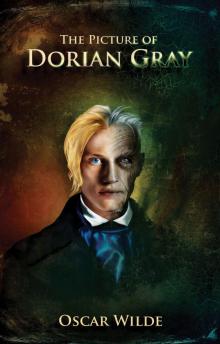 The Picture of Dorian Gray
The Picture of Dorian Gray The Importance of Being Earnest
The Importance of Being Earnest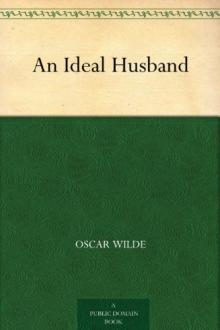 An Ideal Husband
An Ideal Husband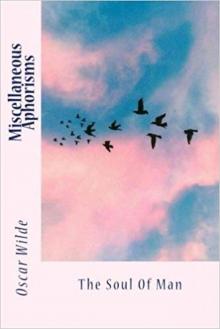 Miscellaneous Aphorisms; The Soul of Man
Miscellaneous Aphorisms; The Soul of Man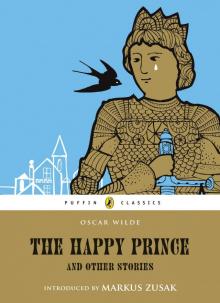 The Happy Prince and Other Tales
The Happy Prince and Other Tales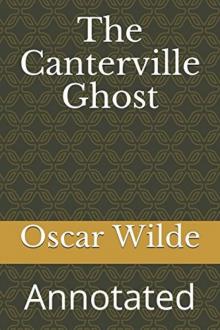 The Canterville Ghost: Annotated
The Canterville Ghost: Annotated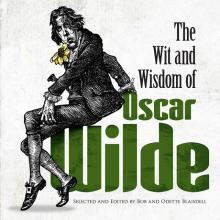 The Wit and Wisdom of Oscar Wilde
The Wit and Wisdom of Oscar Wilde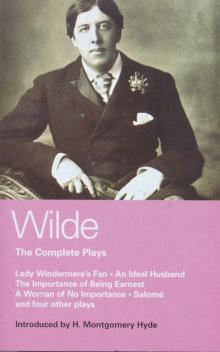 The Complete Plays
The Complete Plays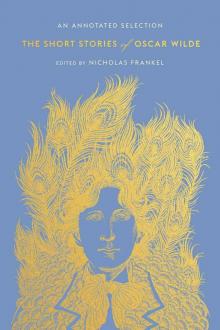 The Short Stories of Oscar Wilde
The Short Stories of Oscar Wilde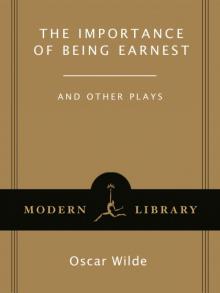 The Importance of Being Earnest: And Other Plays
The Importance of Being Earnest: And Other Plays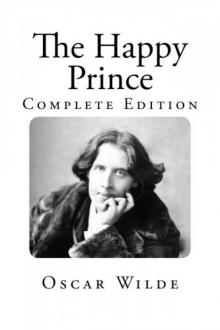 The Happy Prince (Oscar Wilde Classics)
The Happy Prince (Oscar Wilde Classics)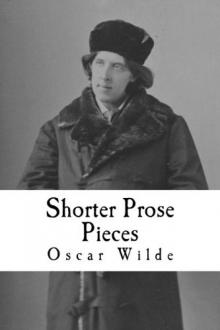 Shorter Prose Pieces
Shorter Prose Pieces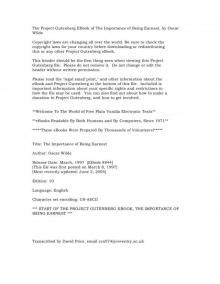 Importance of Being Earnest
Importance of Being Earnest Selected Tales: Shorter Prose Pieces
Selected Tales: Shorter Prose Pieces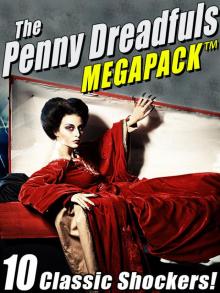 The Penny Dreadfuls MEGAPACK™
The Penny Dreadfuls MEGAPACK™ The Complete Short Fiction
The Complete Short Fiction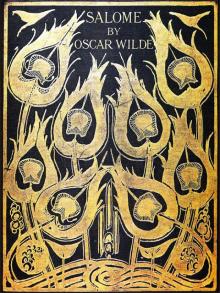 The Illustrated Salomé in English & French (with Active Table of Contents)
The Illustrated Salomé in English & French (with Active Table of Contents)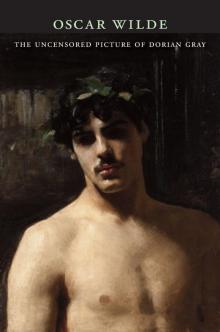 The Uncensored Picture of Dorian Gray
The Uncensored Picture of Dorian Gray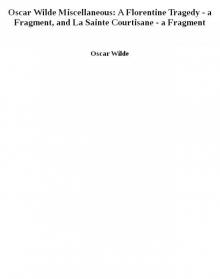 Oscar Wilde Miscellaneous: A Florentine Tragedy - a Fragment, and La Sainte Courtisane - a Fragment
Oscar Wilde Miscellaneous: A Florentine Tragedy - a Fragment, and La Sainte Courtisane - a Fragment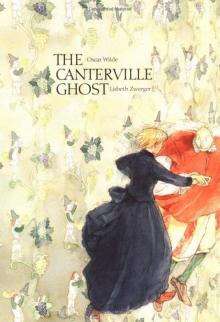 The Canterville Ghost (Illustrated by WALLACE GOLDSMITH)
The Canterville Ghost (Illustrated by WALLACE GOLDSMITH) Complete Works of Oscar Wilde
Complete Works of Oscar Wilde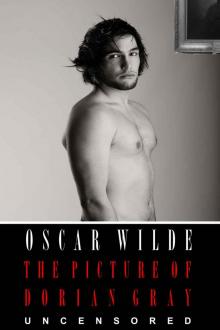 The Picture of Dorian Gray: The Uncensored Original Text (Annotated) (First Ebook Edition)
The Picture of Dorian Gray: The Uncensored Original Text (Annotated) (First Ebook Edition) Fifty Shades of Dorian Gray
Fifty Shades of Dorian Gray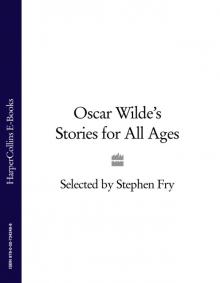 Oscar Wilde's Stories for All Ages
Oscar Wilde's Stories for All Ages The Happy Prince & Other Stories (Puffin Classics Relaunch)
The Happy Prince & Other Stories (Puffin Classics Relaunch)